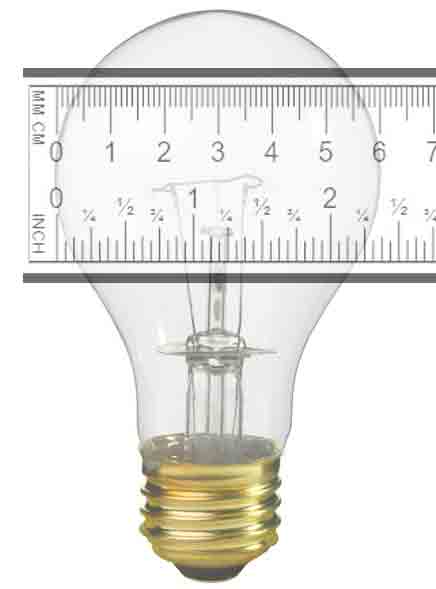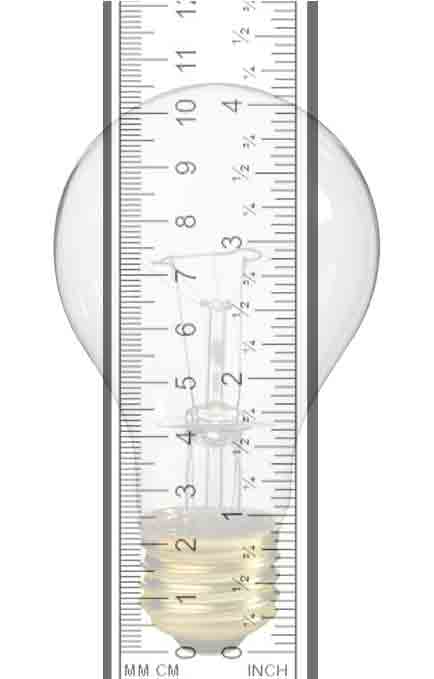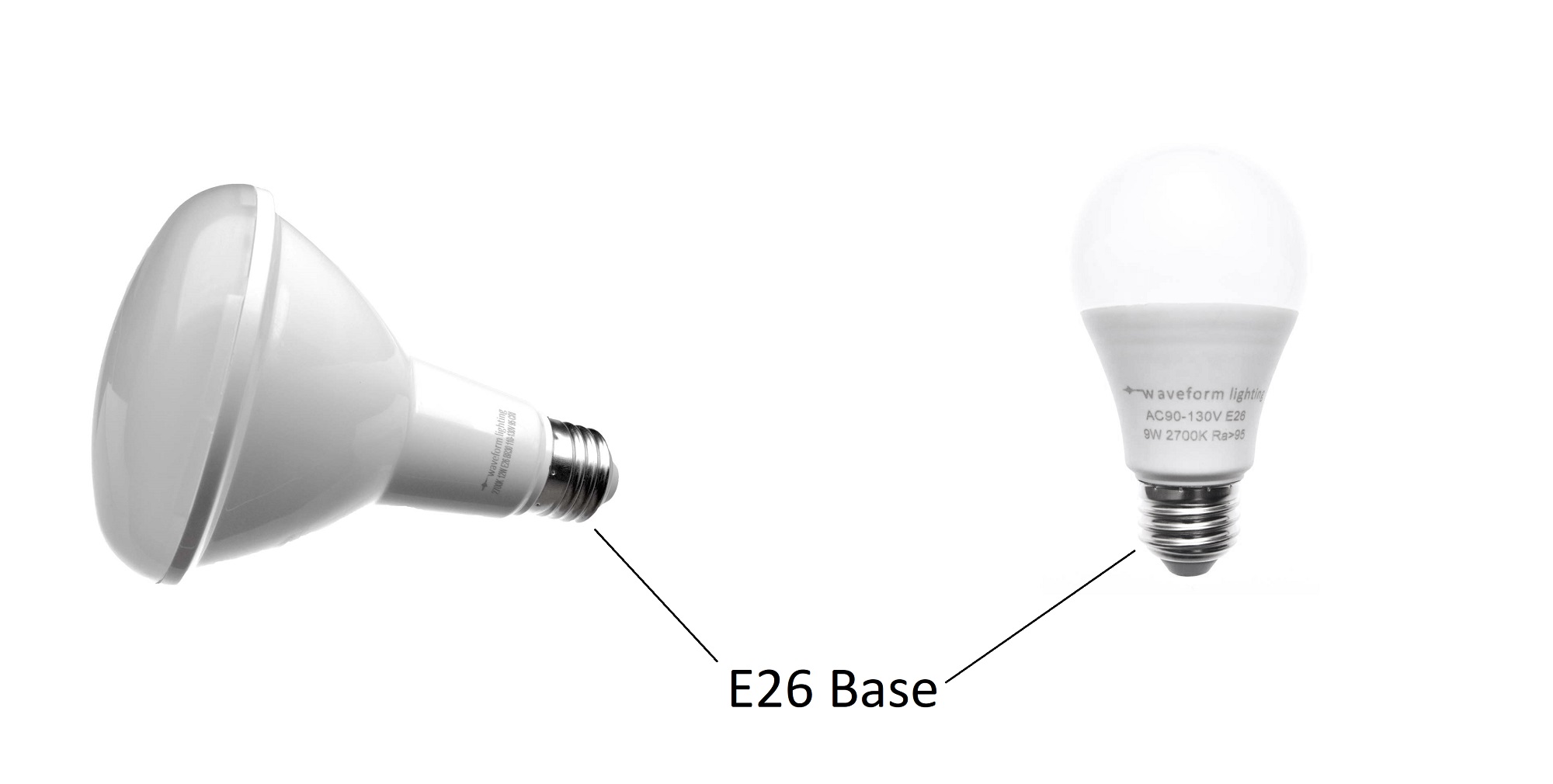What does the term “A60/A19” mean?
The term A60 is used to describe the overall shape and dimensions of a light bulb. It has been used since the era of incandescent light bulbs, and now CFL and LED light bulbs continue to use the same term.
The name A60/A19 consists of two parts – the first letter and the two-digit number.
The “A” refers to the overall shape of the bulb. An “A” bulb has the classic light bulb shape, commonly compared to an upside-down pear.

The two digits after the letter refer to the bulb’s diameter at its widest point which is measured in eighths of an inch. An A60/A19 bulb, therefore, has a diameter of 19 divided by 8 inches, or approximately 2.4 inches(60MM). (Alternatively, this can be calculated as 19 multiplied by one-eighth of an inch).
Dimensions of an A60 bulb
By definition, an A60/A19 bulb has a diameter of approximately 2.4 inches. In countries that use the metric system, A19 bulbs can also be called A60, where 60 refers to the diameter in millimeters.

The length of an A60/A19 bulb is typically 3.9 – 4.3 inches (100-110 mm) in length.

The standard dimensions of an A60/A19 bulb are governed in North America by the ANSI C79.1 standards. For different bulb wattages, different bulb size maximum dimensions are given:
40W Type 210:
108 mm max length, 69.0 mm max diameter
40W Type 211:
112.7 mm max length, 69.5 mm max diameter
50W Type 206:
100 mm max length, 68.0 mm max diameter
50W Type 211:
112.7 mm max length, 69.5 mm max diameter
60W:
112.7 mm max length, 69.5 mm max diameter
75W:
112.7 mm max length, 69.5 mm max diameter
100W:
112.7 mm max length, 69.5 mm max diameter
For the most part, an A60/A19 bulb can be considered within its dimensional requirements if it is within 112.7 mm in length, and 69.5 mm in diameter.
A60/A19 bulbs always use E26/E27, but not vice versa
According to ANSI standards, A60/A19 bulbs must always use an E27/E26 base for mounting into a light fixture.
A60/A19 and E27/E26 refer to different things, but in this case, you will find that all A19 bulbs use E26 lamp bases and all A60 bulbs use E27 lamp bases.
Be aware, however, that the opposite does not hold true: not all E26/E27 bulbs will be of A19/A60 shape. Some E26/E27 bulbs come in shapes completely different from a standard A19/A60 or A-style bulb altogether.

What about A19/A60 CFL and A19/A60 LED bulbs?
With the development of energy-efficient lighting alternatives, CFL and LED bulbs have come to replace incandescent lamps. Because so many incandescent lamps use the A19/A60 form factor, however, their CFL and LED replacements have continued to adopt the same A19/A60 shape to ensure that they can truly be retrofit replacements in existing A19/A60 fixtures.
When shopping for LED lamps, continue to look for A19/A60 LED bulbs if you have a fixture or table lamp designed for A19/A60 lamps.
How Much Brightness (Lumens or Watts) Should an A19/A60 Lamp Have?
Most A19/A60 LED lamps will have their incandescent wattage equivalence values listed. For example, a 10W A19/A60 LED lamp may list its incandescent equivalent wattage as “60W equivalent” to explain that the brightness will be just as much as a 60W incandescent lamp.
The official way brightness is measured is by using the metric lumens. A 40W incandescent bulb emits 450 lumens, and a 60W incandescent bulb emits 800 lumens. The wattage equivalence calculations are industry-standard and are based on these respective lumen numbers.
One quick way to know if you’ll get enough light from a new A19/A60 lamp is to compare the wattage equivalence numbers, or for a more accurate comparison, the lumen output value.
If you don’t have existing incandescent bulbs as a reference point, you may want to check out our lumen estimation calculator!
Which A19/A60 Bulb Color Temperature (CCT) Should I Choose?
Unlike traditional incandescent A19/A60 lamps, LED lamps can emit a variety of colors. If you’re simply looking for the same, warm glow as an incandescent A19/A60 bulb, search for a 2700K color temperature (CCT) rating.
If, on the other hand, you are looking for something a bit crisper or something that mimics natural daylight, you will want to consider something at 4000K or higher.
For further guidance on color temperature selection, check out our color temperature infographic flowchart!
Finally, consider high CRI options for truly replicating the light of an incandescent bulb. A low CRI LED bulb will not reveal colors the same as an incandescent bulb. We recommend CRI values over 90 for most residential applications, with 95 or above preferred.
What kind of light distribution does an A19/A60 bulb have?
A19/A60 bulbs emit light at a 360-degree angle because they do not have any reflectors built in. All of the light emitted by the filament in an incandescent bulb is emitted outwards and evenly.
Most A19/A60 LED lamps similarly emit light at a wide angle in order to mimic the same light distribution as an incandescent light, but some do this better than others. To achieve the most similar light distribution to an incandescent filament, A19/A60 LED filament bulbs have been introduced. These bulbs emit light in much the same way as a traditional filament, but using much more efficient LED filament technology.
Is an A19 bulb the same as an A60 bulb? Are they interchangeable?
Countries that use the metric system will refer to their bulbs as being A60 as opposed to A19. This is because the 60 refers to 60 millimeters, which is approximately the same dimensions as 19 eighths of an inch.


